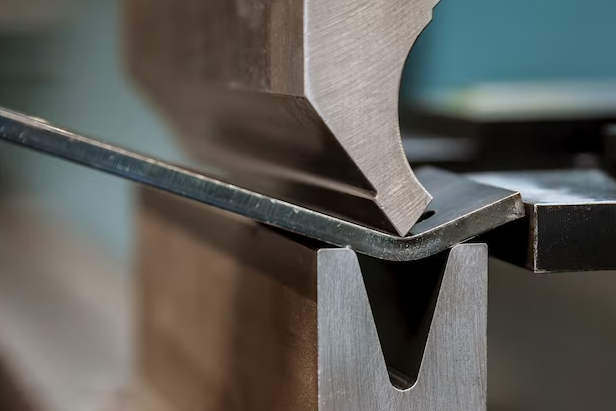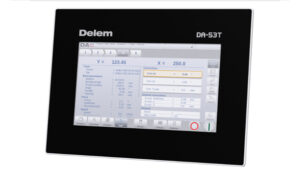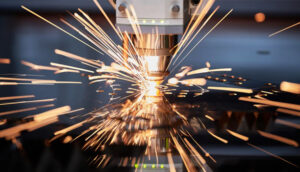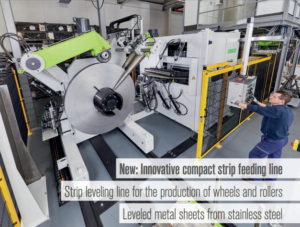In the world of sheet metal fabrication, the process of cutting often leaves behind unwanted burrs and sharp edges on the cut edges. These burrs can be detrimental to the efficiency of subsequent processes such as bending or leveling. Fortunately, GVK Metal Form offers a fast and reliable solution to tackle this issue. With their STEELLINE® range of machines from RWT Czech Republic, you can easily eliminate those unwanted burrs and achieve smooth, clean edges. In this article, we will explore the importance of burr removal in sheet metal and how GVK Metal Form’s machines can provide a practical and efficient solution.
1. Introduction
When working with sheet metal, achieving clean and precise edges is essential for the overall quality of the final product. However, the cutting process often results in the formation of burrs – unwanted protrusions or rough edges along the cut lines. These burrs not only diminish the visual appeal of the metal but also hinder subsequent manufacturing processes.
2. Understanding Burrs in Sheet Metal
2.1 What are Burrs?
Burrs are raised or rough areas that form on the edges of sheet metal after cutting. They can be caused by various factors, such as the cutting method, material properties, and machine settings. Burrs can range in size and shape, from tiny slivers to larger deformities along the cut edges.
2.2 Types of Burrs
There are different types of burrs that can occur during the cutting process. Some common types include:
- Poisson burr: This type of burr forms on the exit side of the sheet metal due to material deformation during cutting.
- Tear burr: Tear burrs are caused by the shearing action of the cutting tool, resulting in jagged edges.
- Rolled burr: Rolled burrs are elongated and occur when the material is pulled upwards during the cutting process.
Understanding the types of burrs helps in selecting the appropriate method for their removal.
3. Challenges Posed by Burrs
3.1 Impact on Subsequent Processes
Burrs can significantly affect the efficiency of subsequent sheet metal processes. For instance, during bending operations, burrs can interfere with the proper alignment of the metal, leading to imprecise bends and potential damage to the material. Similarly, when leveling the sheet metal, burrs can cause inconsistencies, resulting in an uneven surface.
3.2 Safety Concerns
Apart from hindering production efficiency, burrs also pose safety hazards. Sharp edges can cause cuts or injuries to workers handling the sheet metal, jeopardizing their safety and well-being. It is crucial to remove burrs to ensure a safer working environment.
4. The Importance of Burr Removal
Removing burrs from sheet metal is vital for several reasons. Firstly, it improves the overall quality and aesthetics of the final product. Clean and smooth edges enhance the visual appeal of the metal, making it more appealing to customers.
Additionally, burr removal plays a crucial role in optimizing subsequent manufacturing processes. By eliminating burrs, you ensure proper alignment and accuracy during bending, leveling, welding, or any other operation involving the sheet metal. This leads to increased productivity, reduced rework, and improved overall efficiency.
5. Introducing GVK Metal Form’s STEELLINE® Machines
GVK Metal Form understands the challenges posed by burrs and offers an effective solution with their STEELLINE® range of machines from RWT Czech Republic. These machines are designed to remove burrs and sharp edges efficiently, resulting in clean, finished edges that meet the highest quality standards.
5.1 User-Friendly and Reliable
The STEELLINE® machines are user-friendly, allowing operators to quickly learn and operate them with ease. The intuitive controls and clear instructions ensure minimal training time, enabling you to integrate the machines seamlessly into your production process.
5.2 Wide Range of Options
GVK Metal Form provides a wide range of STEELLINE® machines, catering to various sheet metal sizes and thicknesses. Whether you work with thin gauge materials or thicker plates, there is a machine available to suit your specific requirements.
5.3 Configurations to Suit Your Needs
With different configurations available, GVK Metal Form can tailor the STEELLINE® machines to meet your unique needs. Whether you require a standalone machine or integration into an existing production line, the company can provide a customized solution for your specific application.
6. Benefits of Using STEELLINE® Machines
By investing in GVK Metal Form’s STEELLINE® machines, you can reap numerous benefits for your sheet metal fabrication process.
6.1 Enhanced Efficiency
The burr removal process with STEELLINE® machines is swift and efficient. The machines are designed to remove burrs accurately and consistently, allowing you to streamline your production and reduce bottlenecks caused by manual deburring. The time saved can be allocated to other critical tasks, enhancing overall productivity.
6.2 Improved Product Quality
With clean and smooth edges achieved through burr removal, the quality of your sheet metal products will be greatly enhanced. Consistent removal of burrs ensures uniformity across the entire production batch, resulting in improved aesthetics and customer satisfaction.
6.3 Cost Savings
By automating the burr removal process with STEELLINE® machines, you can reduce labor costs associated with manual deburring. The machines operate efficiently, minimizing the need for additional manpower. Moreover, the precise removal of burrs reduces rework and scrap, saving you material costs in the long run.
7. How the Burr Removal Process Works
7.1 Machine Setup
To begin the burr removal process, the sheet metal is fed into the STEELLINE® machine, where it undergoes precise cutting and deburring operations. The machine’s settings can be adjusted to accommodate different sheet metal thicknesses and desired edge finishes.
7.2 Burr Removal Techniques
The STEELLINE® machines employ various techniques to remove burrs effectively. These techniques can include brushing, grinding, or a combination of both. The choice of technique depends on the specific application, material type, and desired edge quality.
8. Choosing the Right Machine for Your Application
When selecting a STEELLINE® machine for your sheet metal fabrication needs, there are a few key considerations to keep in mind.
8.1 Considering Sheet Metal Thickness
Different machines are optimized for specific sheet metal thicknesses. It is important to choose a machine that can handle the thickness of your sheet metal without compromising the quality of burr removal.
8.2 Evaluating Production Volume
If you have high production volumes, selecting a machine with a higher throughput capacity can help meet your demand efficiently. Conversely, if your production volume is lower, a machine with a smaller footprint may suffice.
8.3 Other Considerations
Other factors to consider when choosing a machine include the specific sheet metal material, the desired edge finish, and any additional features or customizations you may require.
Conclusion
In the world of sheet metal fabrication, burr removal is a crucial step to ensure optimal efficiency and product quality. GVK Metal Form’s STEELLINE® machines offer a reliable solution to eliminate burrs and sharp edges, enhancing the overall manufacturing process. By investing in these user-friendly machines, you can achieve clean, finished edges that meet the highest standards. Say goodbye to unwanted burrs and hello to improved productivity and customer satisfaction.
FAQs
What is the recommended maintenance for STEELLINE® machines?
To maintain optimal performance, regular cleaning and inspection of the machine components are recommended. GVK Metal Form provides detailed maintenance instructions and schedules in the machine’s user manual.
Can STEELLINE® machines handle different types of sheet metal?
Yes, STEELLINE® machines are designed to handle a wide range of sheet metal materials, including stainless steel, aluminum, and carbon steel.
Are these machines suitable for small-scale operations?
Absolutely! The STEELLINE® machines can be adapted to suit various production scales, from small-scale operations to large industrial facilities.
Can I integrate STEELLINE® machines into my existing production line?
Yes, GVK Metal Form offers flexible configurations that allow seamless integration of STEELLINE® machines into existing production lines. Their team can work with you to design a customized solution that meets your specific requirements.
How long does it take to remove burrs using these machines?
The time required to remove burrs varies depending on factors such as sheet metal thickness, burr size, and desired edge finish. However, the STEELLINE® machines are designed for efficient burr removal, significantly reducing processing time compared to manual methods.




